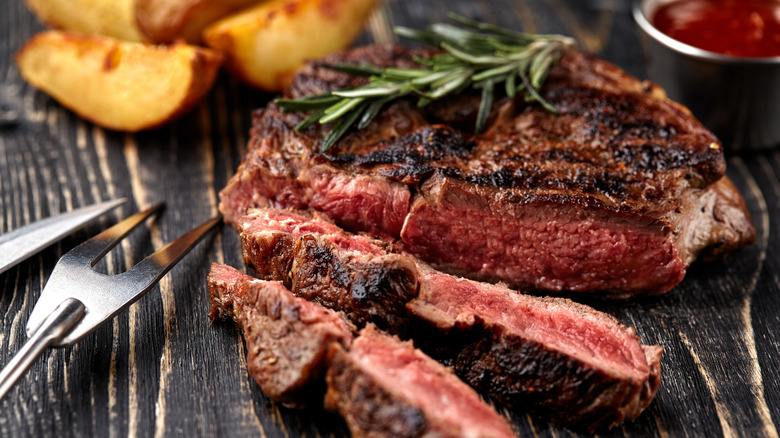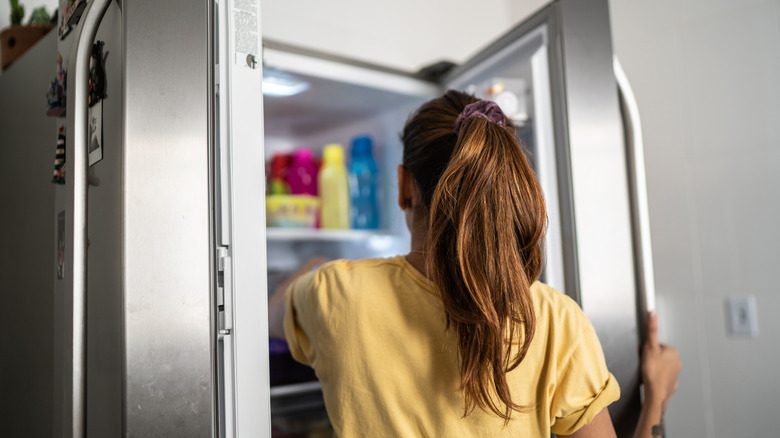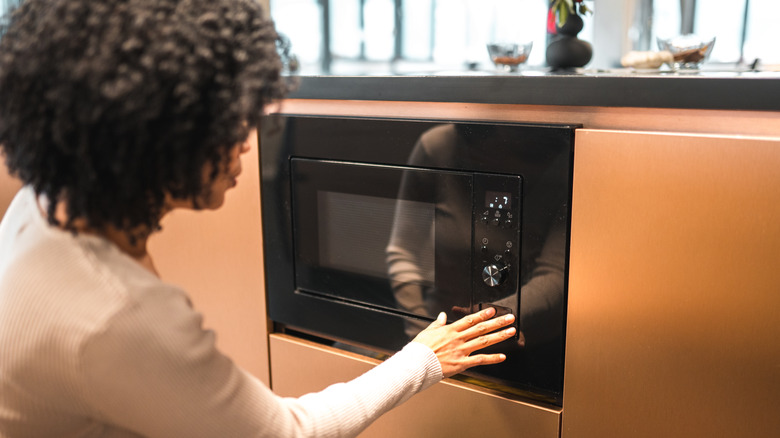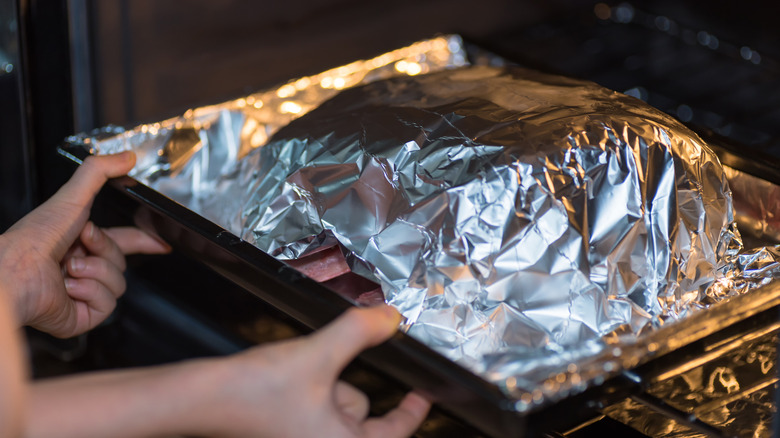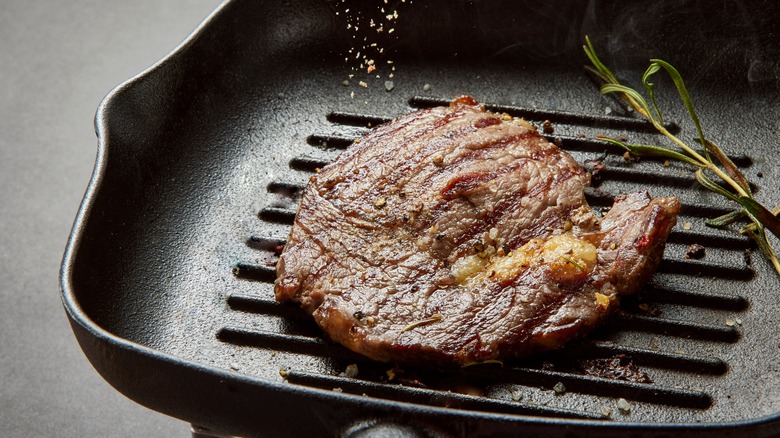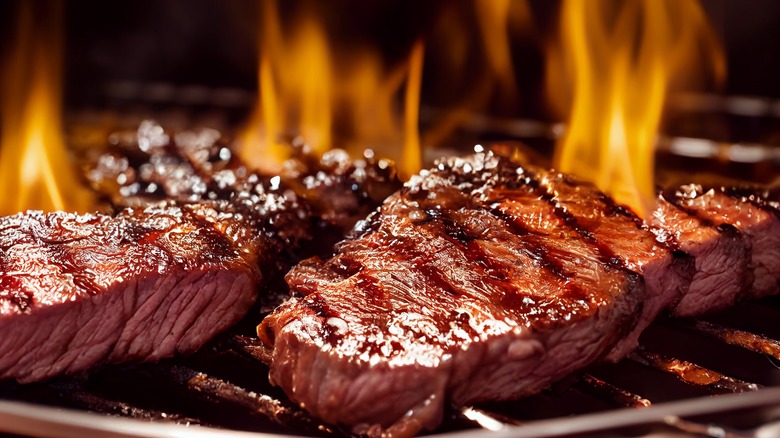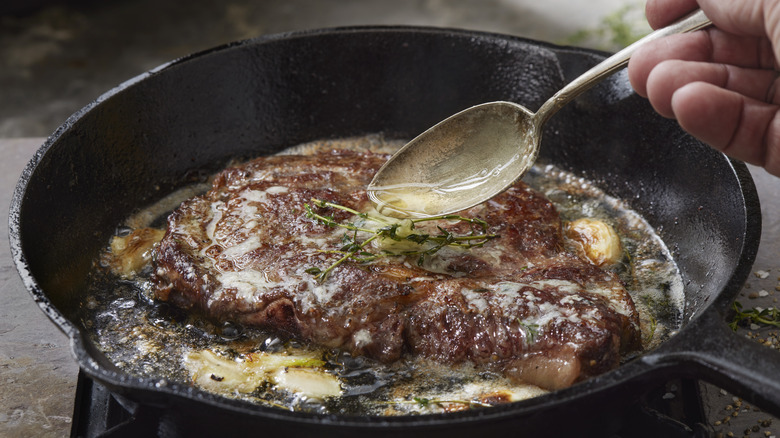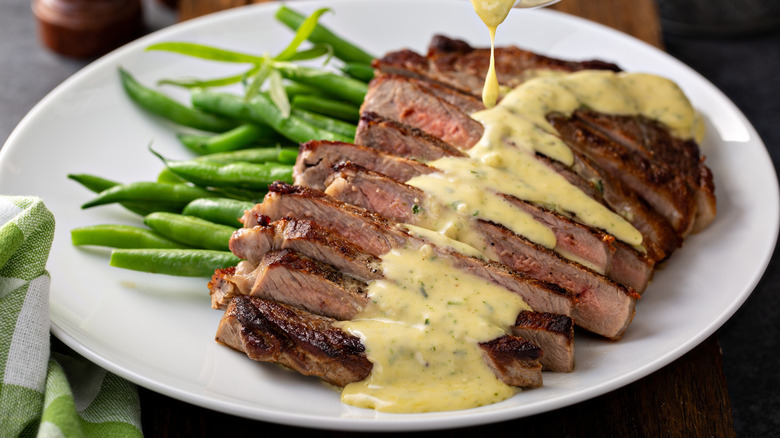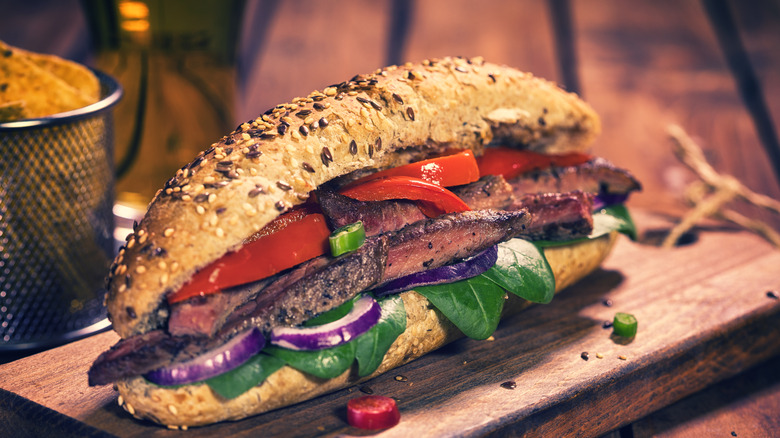Mistakes Everyone Makes When Reheating Steak
Some foods are made for reheating — things like chili con carne or beef stew only get better after a night in the fridge. But others, like steak, only seem to suffer when kissed by heat the next day, ending up dry and overcooked no matter how hard you try. But don't let that deter you from serving up leftover steak the next day.
"A great steak should not go to waste," says Chef Michael Paley, Executive Chef of Prime 54, "and there are many ways to eat the next day at breakfast, lunch, or dinner."
"It's a sin to waste good steak!" echoes Chef Matt Kreider, Executive Chef of Steak 954, who notes that those who fear ruining their beef need not worry too much. "As long as you are starting with a great cut of meat to begin with, it will come out great!" says Kreider.
Anyone who fears the possibility of foodborne illness can rest assured, according to Frank Brusco from Gabriella's Italian Steakhouse. "Reheated steak is perfectly fine," he says, "as long as you initially cook your steak to a safe temperature."
Of course, there are a few rules to bear in mind, ranging from the kitchen appliance you use to the amount of heat you apply. Luckily, culinary experts have provided us with more than enough tips, and in focusing on the mistakes you may be making when reheating steak, they'll surely point you in the direction of beefy bliss.
You're reheating steak straight out of the fridge
Before you even start to mess with reheating your steak, begin by letting your central heating do part of the work. Our experts agree that it's a good idea to let your steak come up to room temperature. In fact, according to Paley, "This is the most important step in the process."
"This will allow you to control the finished internal doneness by just concentrating on re-activating the char and outer crust without overcooking the center," he says.
Kreider agrees with Paley on the importance of this pre-cooking step. "Definitely let the steak slowly come up to room temperature," he says. "If you reheat directly from the refrigerator, the outside will become extremely tough by the time the center is the desired temperature." Brusco echoes this tip, noting that taking the time to allow the steak to come up to temp ensures that the resulting piece of beef will reheat more evenly than if it had come straight out of the fridge.
As for how long you should wait, this depends on the size of your steak and the temperature of your kitchen. But as a rule of thumb, Paley notes that he doesn't actually start heating the steak until it has sat at room temperature for about half an hour.
You're using the microwave wrong
While a microwave might seem like the quickest, easiest option for reheating leftover steak, most of our experts find it more problematic than useful. "I would avoid it," says Kreider. "Microwaves are great for a lot of things, but not reheating steak in particular."
This is in large part due to the way microwaves work. Microwaves reheat food by causing the water molecules within the food to vibrate quickly against one another, something that ultimately ends up causing the steak's fibers to constrict, giving you a chewy, dry finished result.
"Unless you prefer a well-done steak, this will be a challenge to do correctly," says Paley. "Slowing reheating a steak in a toaster oven, grill, or conventional oven is preferable."
That said, if you do want to rely on the microwave, there are a few tips you can follow. Amy Morton, daughter of Arnie Morton and restaurateur behind Arnie Morton's Daughter's Place, recommends relying on the "reheat" mode of your microwave to keep your steak from overcooking.
"The best way to reheat steak in the microwave is by putting the steak back in its original juices and covering the dish in plastic wrap," adds Brusco. "Reheating times depend on how thick your cut of steak is, but we recommend turning the steak halfway through." Microwaving in 30-second intervals will also keep the steak from overcooking and help ensure your steak stays as juicy as possible.
You're neglecting the oven
Rather than relying on the microwave, most of our chefs agree that the oven is the best tool when it comes to reheating steak. "An oven or an air fryer will get you your best result," says Kreider, who notes that if your oven has a broiler or a broiler function, this is all the better for the best final result. This stems from the fact that using super-high heat means your steak won't take that long to reheat, reducing the risk of overcooking it significantly.
"Depending on how done the steak already is will determine your timing," he says, noting that as a rule of thumb, a medium-rare steak can be reheated for 1 ½ to 2 minutes per side. An additional two minutes' resting time will ensure the heat can permeate all the way through to the center.
That said, our experts have not reached a consensus on the best way to use the oven to reheat leftover steak. Both Brusco and Morton recommend a far lower heat — 225 degrees Fahrenheit for Morton or 250 to 275 degrees Fahrenheit for Brusco — for the best results.
"Place the steak on a wire cooling rack over a baking sheet and leave it in for around 20 minutes," suggests Brusco. "The lower the temperature, the juicer your steak will be."
Morton says you can warm it slightly less until it's just warm to the touch, cautioning that regardless of how you reheat it, "it will cook more."
You're reheating your steak over too low a heat
The question of whether to reheat your steak over low or high heat is up for quite a bit of debate among our experts, something that is linked, at least in part, to the method you choose for reheating. While if using the oven, Morton likes to keep the heat low, her preferred method for reheating steak is actually "a quick pan fry."
For this, she recommends starting with high heat and adding just a touch of spray oil, though you may find your methods and timing change depending on the cut you're working with. "So much depends on what the person has to reheat, how much they have, and what they feel like," she says. "For me, I would probably want it first thing in the morning, so I would do a quick sear in a pan with two fried eggs and toast. Yummy."
Kreider, meanwhile, also likes a high heat, but not in a pan — in the oven. The broiler setting of an oven typically brings you to a temperature of 500 to 550 degrees Fahrenheit, meaning you can reheat your steak for far less time and hopefully reduce the risk of drying out the steak.
You're reheating steak over too high a heat
On the other hand, some of our experts prefer to reheat steak with a much lower heat, with Brusco noting that no matter what precautions you take, "if you reheat the steak at too high a temperature, it will ultimately dry out."
Indeed, according to Kreider, reheating steak over too high a heat is perhaps one of the most frequently committed errors home cooks make. "I think most people I see are overly aggressive with heat and forget to rest," he says. "The rest is one of the most important parts of cooking any steak. Let the temperature change gradually, it's already cooked!"
Paley agrees, adding that once the steak is at room temperature, low cooking temperatures are the ideal way to gently reheat it without overcooking it, and working with low heat gives you a greater margin of error. High-heat cooking methods may mean that you have mere seconds between perfectly reheated and overcooked; a low heat ultimately affords you better control.
You're neglecting added fat
Since the major concern with reheating steak is down to the drying effect that added heat can have, it stands to reason that adding more moisture can counterbalance any flaws. And there may be no moisture source more delicious than added fat, which could, according to Kreider, help offset the drying effect of a second dose of heat on your meat. That said, not any fat source will do. "Butter or an olive oil with some flavor are what I would recommend," he says. "No neutral oils, there's no real benefit."
Paley takes this advice a step further, suggesting fully submerging a steak in fat before slowly reheating it. While he admits this technique isn't always easy or feasible in a home kitchen, he adds that if you're up for all that added fat, "it would work great and add tons of flavor and juiciness."
That said, according to Brusco, added fat is far from necessary when reheating a steak, especially if it's a fattier cut. "For drier cuts of steak, adding oil or butter will help," he says, "but if you reheat the steak at too high a temperature, it will ultimately dry out."
Think about added fat less as a necessity for cooking and more as a source of complementary flavor and moisture. A bit of melted compound butter spooned over the reheated steak will help it hold onto heat and add even more flavor to your leftovers.
You're forgetting about the power of a good sauce
A good sauce can camouflage many ills, including an overcooked or dry steak. So, if you want to err on the side of caution, consider reheating leftover steak in a sauce or gravy. This will allow it to stay moist and give it even more flavor, according to Brusco. It's no wonder so many steakhouse classics come with a side of sauce.
Of course, not all sauces work the same way. Some sauces, like a simple au jus or creamy mushroom gravy, can easily welcome your steak — either whole or in slices — and provide it with a warm bath to heat it through. That said, you can also reheat your steak plain and serve it with a sauce on the side, like a rich, herbaceous béarnaise, a sweet homemade barbecue sauce, or a piquant blue cheese sauce.
That said, Kreider cautions that while sauces are indeed powerful allies, a sauce will not disguise every flaw.
"Sauces can hide some issues, especially with a dry steak," he says. 'But a tough steak will still be tough. Sauces can't hide everything."
You haven't considered repurposing leftover steak
If you're considering reheating your steak, one question you may want to ask yourself is why. Cold steak is delicious, and if it was already perfectly cooked the first time around, it may be your better option.
"Whether you're slicing it thin to use for sandwiches or chopping it up to throw in a salad, there are endless ways to repurpose leftover steak," says Brusco. "My preferred method for utilizing leftover steak is to incorporate it into an omelet with mushrooms, spinach, and your favorite cheese. It creates the perfect breakfast!"
Whether to reheat or repurpose your steak is a decision, according to Kreider, that often comes down to which steak you were cooking in the first place. "I think the steak determines what you use it for," he says. "Some steaks I would reheat, while others I would repurpose."
Leftover strip steak, he says, could easily be quickly reheated for a simple dish of steak and eggs; leftover roast, he adds, would make a tasty pot pie. But something lean like beef tenderloin might be better used cold in one of his favorite dishes: a steak sandwich.
"A quick stir-fry is also pretty easy and does the steak justice," he adds.
